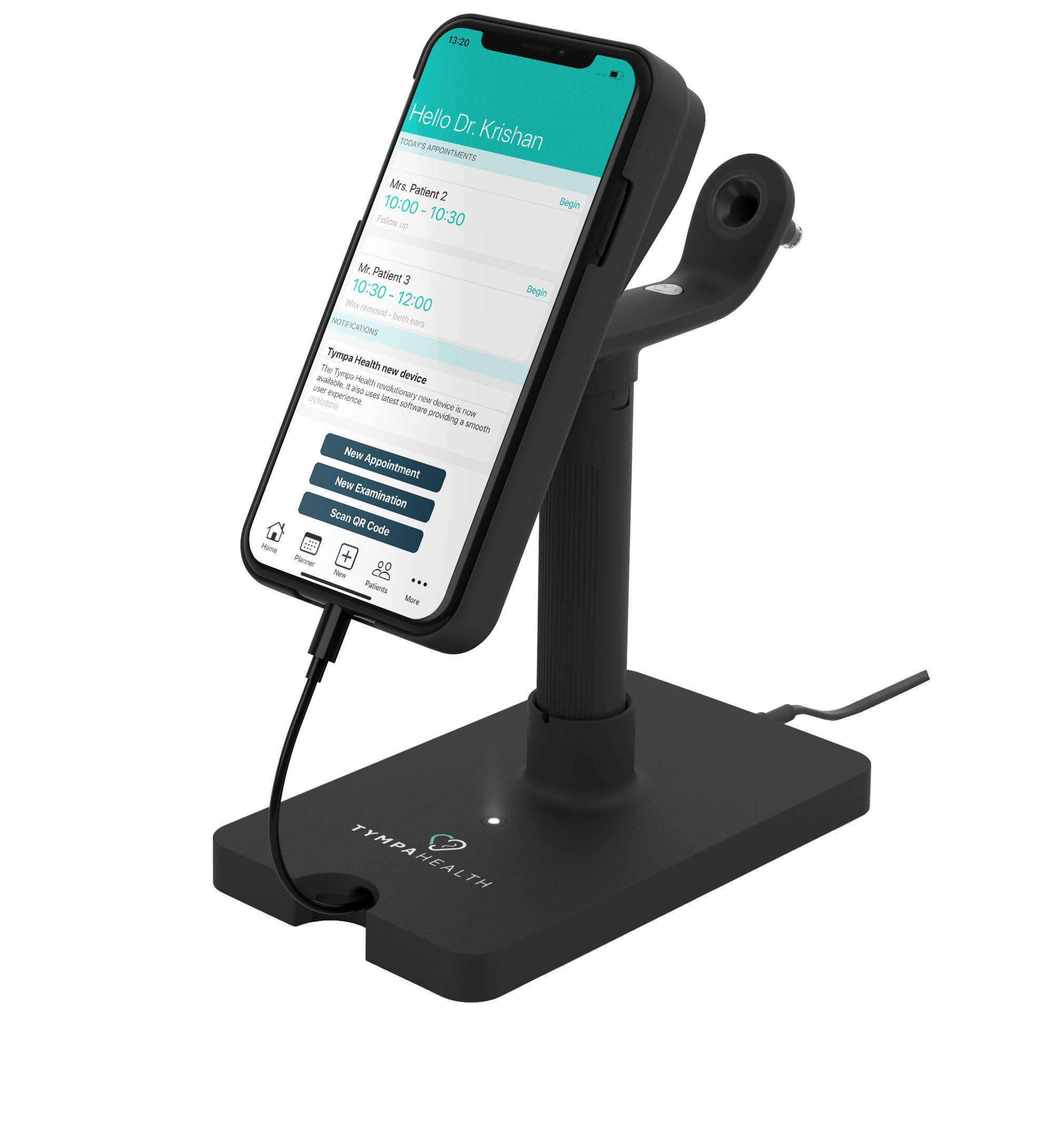
7 minute read
The Rising Tide of User Experience
MODERN MEDICINE
THE RISING TIDE OF USER EXPERIENCE
Over my 20 years working in medical device design, I’ve seen a positive shift in the understanding and respect of industrial design in the industry. At times, it has seemed like an uphill battle to demonstrate the value we, as a profession, add. However, with a bit of patience, some very talented designers and a better understanding of ID—thanks to the success of design-led companies in the consumer tech world—it feels like the doors have opened. So what’s changed?
When I moved into medical device design back in the early 2000s, the focus was on developing technically robust products that were rigorously tested to ensure they’d survive their intended life cycle. For example, an inhaler needs to withstand being shoved in the bottom of a teenager’s backpack day after day and still work 100% of the time. Roll forward five years and the demand for human factors engineering grew as the regulatory bodies (FDA, etc.) required companies to prove “safe and effective use” in the hands of people. Working closely with our human factors colleagues, our work shifted to developing highly intuitive products with easy-to-follow instructions. More recently, though, there has been a significant shift in focus to user experience—UX in the broadest sense. While there is no regulatory requirement (yet?) to optimize user experience, several key factors have contributed to it becoming a bigger deal in the work we do as medical designers.
Consumers of healthcare have become better informed and more demanding. Modern generations are less content to accept a healthcare solution when they feel it doesn’t meet their needs. With readily available resources, forums and product reviews online, consumers of healthcare have become savvier. It’s no longer enough to consider how a product you are developing measures up against competitor products. You also need to assess what else it might be compared to: how the user experience compares to other services, medical devices or consumer tech that the user may be interacting with. This is even more important when developing connected medical devices where a healthcare app has to measure up against tried-and-tested global platforms on the same home screen.
The expansion of healthcare at home. As healthcare budgets become increasingly stretched due to the aging population, treatment of many chronic conditions has moved away from the clinical environment. With more and more treatments administered in the home by patients or caregivers, we cannot focus only on usability (what a patient can use) but must also optimize the user experience of a device (what a patient wants to use—acknowledging that no one really wants to use a medical device). Designers need to consider what will motivate end users (who may be very unwell) to inject, swallow or inhale their therapy multiple times a day—even when it doesn’t make them feel immediately better. When there isn’t a trained healthcare professional present to encourage and ensure correct use, how can we develop products and experiences that compensate for the lack of human interaction?
The shift from treatment to prevention. Keeping people out of the hospital not only saves money—it can improve quality of life and speed up recovery for patients. Each year at CES we see an array of products spanning the health and wellness space: products designed to help us improve our sleep, monitor and encourage physical activity, improve our diet and reduce stress. Greater emphasis on prevention of illness requires us to develop products that encourage good habits and discourage bad ones. The realm of behavioral science—which has been used extensively in the consumer world to smooth the path to purchase, ease onboarding and, more controversially, hook us to digital services—is now being more widely adopted in healthcare to encourage compliance with medicines and treatments. Going forward, designers will play an important role in creating experiences that have a positive effect on human behavior.
The Tympa Hearing Heath Assessment System uses smartphone technology to increase access to care for those suffering from hearing loss.


Where physical meets digital—two worlds collide. In the world of pharma, the trend toward connected products has increased rapidly over the past few years. Though still lagging behind the curve compared to the consumer tech world, the healthcare industry is embracing technology as a solution to improve compliance and, in turn, improve healthcare outcomes. Devices with integrated sensing allow us to get data on device usage and enable interventions when they are most effective. But the development of digital interfaces in healthcare is different than in other industries. While digital therapeutics (software-based treatments) are increasing in the market, an app is rarely standalone—often the digital interface is part of a broader interface, including physical touchpoints of the device, packaging and paper instructions. As designers, we need to consider how all touchpoints in the system can encourage the desired user behaviors. These systems require user experience, user interface, and industrial and graphic designers working toward a common goal.
A digital healthcare revolution. It appears we are on the brink of a digital healthcare revolution. Tech giants and medical institutions, big pharma and medical-technology device manufacturers have begun to collaborate to bring about better healthcare solutions. The sharing of data, data science, analytics, artificial intelligence and skills in user experience design will have the biggest effect in pushing this forward and improving healthcare outcomes. Technology is the key to a better understanding of which healthcare treatments and approaches are most effective at an individual level. But this is only possible if we work smart and if consumers of healthcare allow their data to be shared so it can be used to develop better solutions. We need to design products that provide tangible benefit without requiring end users to change their behavior.

How will the role of designers likely evolve? As the sands continue to shift, we’ll need to be versatile. We must continue to work most effectively with our colleagues in manufacturing, human factors and more while embracing the value that our colleagues in the digital, information and behavioral design world bring to the mix. Medical product design will never be straightforward. Designing products and experiences in a regulated environment is tough. It requires discipline. We need to be cognizant of the constraints and work creatively within them. A right-the-first-time philosophy will likely continue to be the norm. Products need to undergo rigorous testing (technically and with users), and design decisions must be backed up with evidence before they will receive approval for launch.
In the consumer tech world, it’s acceptable (as long as investors share your attitude toward risk) to launch an experimental product on the market. You can learn in real time what consumers like, dislike and want and, therefore, iterate through multiple generations to an optimal product (the truest sense of design thinking). This approach to understanding customer needs is unlikely to become acceptable in the medical world. And for good reason. We often deal with products that have a significant effect on someone’s health and quality of life. The products we develop can take years to bring to market, costing hundreds of millions in investment. Those that make it to market will likely stay there for 10 to 20 years (yes, the very first medical product I worked on back in 2001 is still on the market today in its original unaltered form). So it’s understandable that our clients want to make sure we’ve done everything we can to understand market needs and minimize risk.
My journey in medical device design has taken me to 50 cities across 20 countries worldwide. I’ve witnesses different working practices, cultures and communication styles—some of which reinforce stereotypes and some of which surprise. (Sweden has the strongest coffee, by the way). I’ve seen differences in how people deliver and consume healthcare—influenced not just by nationality and culture but by socio-economic background, age and education. My main observation is that humans are humans wherever we live. We are complex individuals with behavior rooted as much in a psychology reflecting thousands of years of evolution as in our individual backgrounds. It’s hard to predict how a solution we develop will perform in the hands of real people and harder still for us designers in the medical world because those who use our products may have such different challenges from us. Taking the time upfront to understand these challenges and ensuring regular touchpoints with users through the design process is critical. We have to base important decisions on evidence while not ignoring our designer’s intuition that allows us to do our best work.
—Paul Greenhalgh, I/IDSA paul.greenhalgh@team-consulting.com
Paul Greenhalgh leads design and innovation at Team, working closely with clients and colleagues to improve the user experience of medical devices through carefully crafted ID, UI/UX, packaging and information design solutions.






